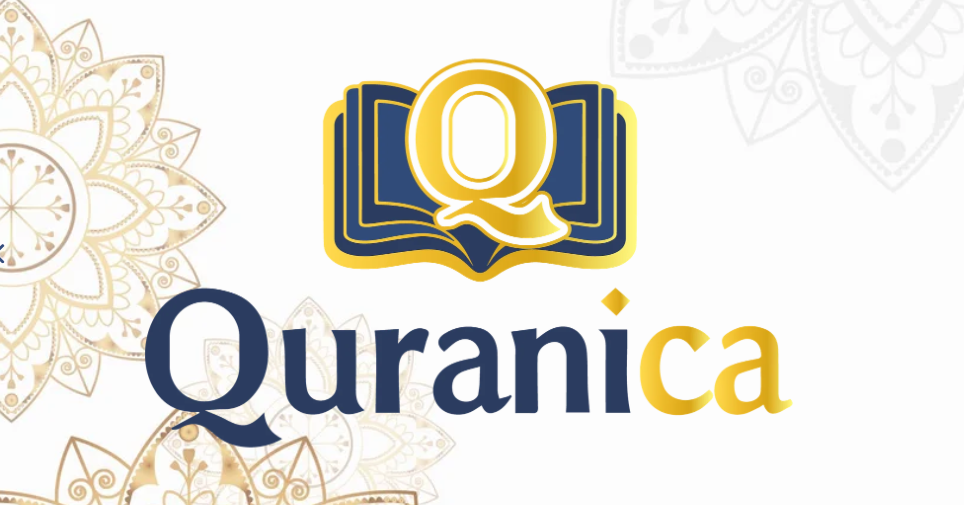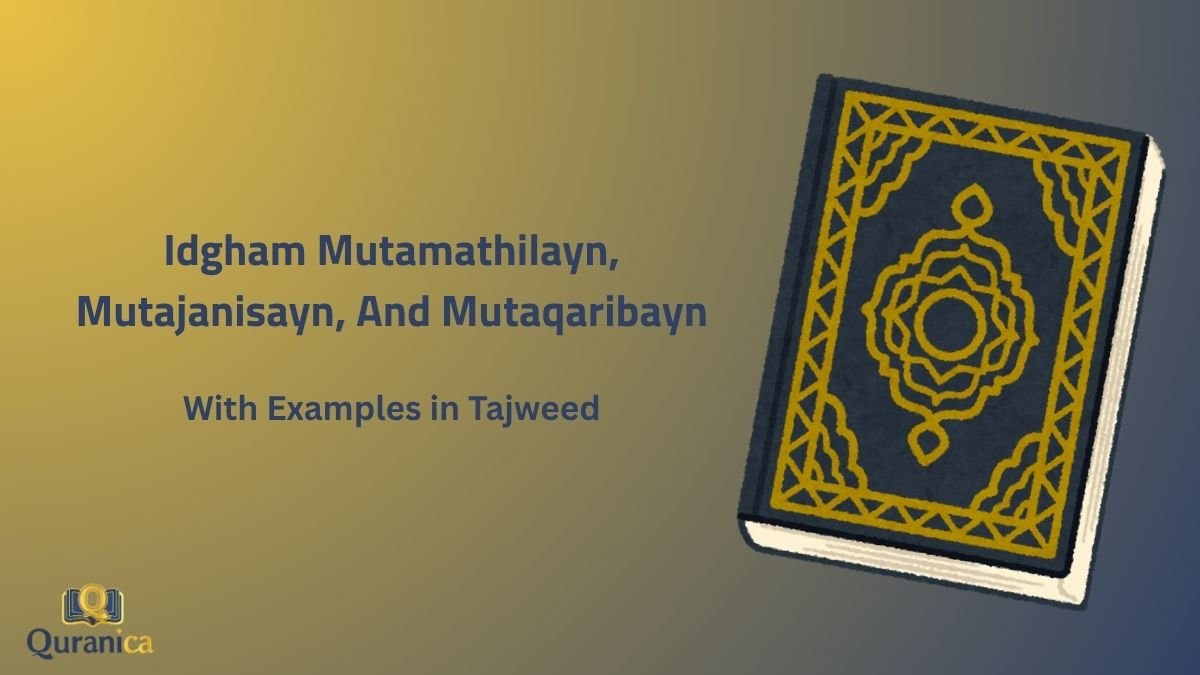Among the advanced Tajweed rules, the concepts of Idgham Mutamathilayn (merging identical letters), Mutajanisayn (merging similar letters), and Mutaqaribayn (merging close letters) play a vital role in achieving fluent and accurate Quranic recitation.
Each type focuses on how the tongue and articulation points handle two consecutive letters that are either identical, similar in origin, or close in characteristics. In this guide, we break down these rules with clear Quranic examples to help you understand when and how merging happens, so you can recite with precision and beauty.
Idgham Mutamathilayn (ادغام متماثلين – Merging of Two Identical Letters)
This is the merging of two identical letters. The rule is: if two identical letters meet, and the first has a sukoon while the second has a vowel, they are merged into one letter with a shaddah.
Examples of Idgham Mutamathilayn in Quran
Here are a couple of clear examples to help you see how it works in practice.
“اضْرِب بِّعَصَاكَ”
Idhrib-bi‘asaak
“Strike with your staff…” (Surah Ash-Shu’ara, 26:63)
Here, the first Baa with a sukoon (بْ) in the word اضْرِبْ completely merges into the second, voweled Baa (بِ). The result is a single, stressed Baa sound with a shaddah.
“قُل لَّا أَسْأَلُكُمْ”
Qul-laa as’alukum
“Say, ‘I do not ask you for it any payment…'” (Surah Ash-Shuraa, 42:23)
Notice how the Laam with a sukoon (لْ) at the end of the word قُلْ is not pronounced separately. It flows directly into the voweled Laam (لَّا) that follows, becoming one stressed Laam.
Idgham Mutajanisayn (ادغام متجانسين – Merging of Two Homogeneous Letters)
This is the merging of two “homogeneous” letters—letters that share the same articulation point (makhraj) but have different attributes (sifaat). The first letter (with a sukoon) is merged into the second (with a vowel).
Examples of Idgham Mutajanisayn in Quran
“قَد تَّبَيَّنَ”
Qat-tabayyana
“The right course has become clear from the wrong…” (Surah Al-Baqarah, 2:256)
Here, you do not pronounce the Daal at all. The tongue goes to the position for the Daal but immediately pronounces a stressed Taa (تّ), making the transition seamless.
“قَالَت طَّائِفَةٌ”
Qalat-Taa’ifah
“And a faction of the People of the Scripture say…” (Surah Aal-i-Imran, 3:72)
Notice how the light ‘t’ sound of “qalat” disappears entirely. Instead, you pronounce a single, heavy, and stressed Taa’ (طّ), connecting the two words powerfully.
Read also: Idgham Shafawi إدغام شفوي With Examples in Tajweed
Idgham Mutaqaribayn (ادغام متقاربين – Merging of Two Close Letters)
This is the merging of two “close” letters. These letters have articulation points (makhraj) and/or attributes (sifaat) that are very near to each other, but not identical.
Examples of Idgham Mutaqaribayn
“قُل رَّبِّ”
Qur-Rabbi
“Say, ‘My Lord…'” (Surah Al-Mu’minun, 23:93)
Here, the Laam in قُل is completely silent, and the tongue moves directly to the articulation point of the Raa, which is then pronounced with a shaddah.
“أَلَمْ نَخْلُقكُّم“
Alam nakhluk-kum
“Did We not create you from a fluid of no value?” (Surah Al-Mursalat, 77:20)
In this verse, the deep sound of the Qaaf (قْ) is completely assimilated into the lighter sound of the Kaaf (ك), which is then pronounced with a shaddah. This is a complete merging (Idgham Kamil).
Read also: Idgham Rules, Types, And Letters in Tajweed
Learn Tajweed with Quranica
The rules of Tajweed, like Idgham, are the keys to unlocking the divine beauty of the Quran’s sound.
It is a trust (amanah) upon us to recite the words of Allah as they were revealed. Reading is good, but reciting correctly and beautifully is the goal.
At Quranica, we believe that every student deserves to learn from the best. Our instructors are not just tutors; they are inheritors of a sacred tradition.
- Learn Quran with Tajweed (for all levels)
- Quran Memorization (Hifz) Programs
- Ijazah Course
- Islamic Studies
- Ten Qirat
- Arabic Lessons for Beginners
Explore our full range of courses.
Join a Quranica course today!

Conclusion:
Whether you’re working on mastering Idgham Mutamathilayn, refining your application of Mutajanisayn, or recognizing the subtlety of Mutaqaribayn, learning these rules takes your Tajweed to the next level. These are not just phonetic details—they are part of preserving the divine rhythm and eloquence of the Quran.
At Quranica, our qualified instructors guide you through every nuance with real examples, structured lessons, and personal support. Ready to perfect your recitation? Join Quranica’s Tajweed course today and continue your journey of mastering the art of Quranic recitation.








0 Comments